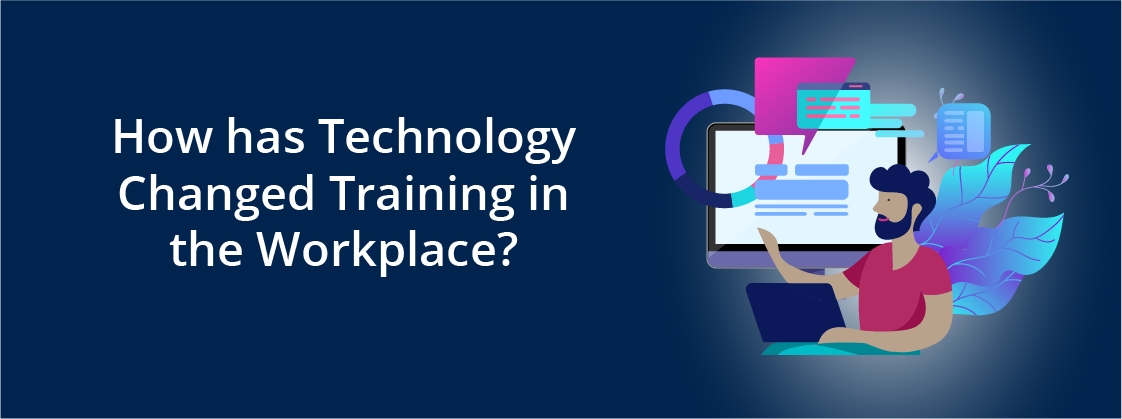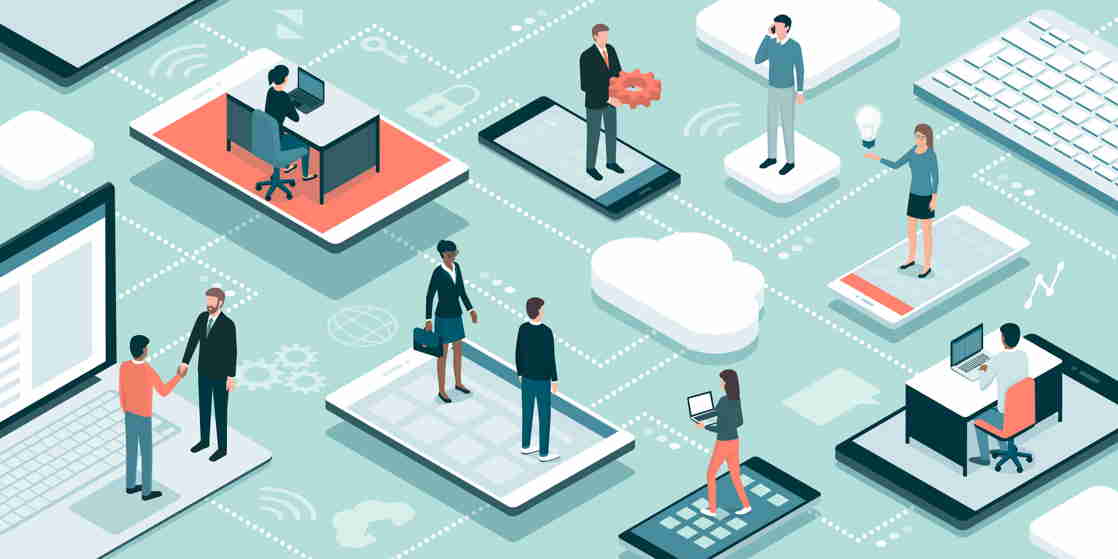We may not have the course you’re looking for. If you enquire or give us a call on 01344203999 and speak to our training experts, we may still be able to help with your training requirements.
Training Outcomes Within Your Budget!
We ensure quality, budget-alignment, and timely delivery by our expert instructors.

Few things have had as much impact on the development of human civilisation as new technologies. The current technological revolution has changed everything, including how we communicate with each other and how we think of money. In training, it is now also changing how employers upskill their staff and the expectations employees have when it comes to professional learning.
In this blog, we’ll answer the question “how has technology changed training in the workplace?” and provide both employers and employees with tips on how they can get the most out of their in-house training.
Gamifying Workplace Training
We’ll start by turning your attention to a previous post we’ve published on the 5 benefits of providing professional development. Reading through these benefits will give you a better idea of why workplace training is so important.
The thread running through successful workplace training programmes is their ability to engage employees. One of the best ways of achieving high engagement rates during these activities is to use gamifying tactics. Gamifying means incorporating elements typical to game playing, such as point scoring or rules to follow, in order to increase enjoyment and encourage engagement during an activity.
Inspired by video games, gamifying takes the elements which games use to draw and hold the attention of those playing, while also developing specific skills and encouraging certain behaviours.
Gamifying improves workplace training by:
-
Making training sessions more memorable and improving information retention
-
Allowing employees to put themselves in simulated scenarios which force them use the knowledge gained during the training session itself
-
Giving employers and HR reps the ability to test how well the training session has gone and identify problems. This can uncover problems with the training programme or the person in charge of it. If needed, training the trainer type courses can then be used in order to improve the workplace training prowess of HR staff
-
Adding an element of competitiveness which engages employees and incentivises them to participate and perform as well as they can
-
Providing a sense of achievement when goals are met

A couple of examples which perfectly illustrate the way in which gamifying has changed workplace training are the Smyth’s Toy Store Health and Safety video game and the FundFantasy Financial Fantasy Contest Platform.
Smyth’s developed a low-resolution video game which is to be played by employees after every Health and Safety workshop. The game allows employees to walk through a virtual rendition of an actual Smyth’s store in third-person view in order to identify and sort out potential workplace hazards. It’s a great way of testing employees’ knowledge and information retention after workshops, and it provides an environment where mistakes can be made and learned from without any real-life negative consequences.
Another tool which illustrates how gamifying can be used in workplace training is the Financial Fantasy Contest Platform designed by FundFantasy. This piece of software allows investors to simulate investing in financial assets without having to deal with any of the consequences that come with real-life financial market trading.
Using this tool, users can safely bet on a range of assets without having to risk large sums of money. This means that users are incentivised to act as if they were actually risking their investors or their own money (as cryptocurrency prizes are offered to the most successful investors) while also being able to try out new techniques which might lead to better ways of trading on the real market.
For financial sector firms, combining a tool such as the Financial Fantasy Contest Platform with continuous and remote learning possibilities through online blockchain training courses, for example, could provide an excellent solution for turning fresh employees into excellent traders without any risk.
Businesses can also help guide employees towards the best courses for their professional development. Our guide on how to successfully find a training provider sets out introductory steps for both businesses looking to place workers in training and employees wanting to find the best course to progress their career.
Continuous Learning
In the traditional training model, employees are expected to quickly learn and retain everything they need to know within a short period, like a student cramming the night before an exam. There are several problems with this model, the most glaring stems from the fact that information memorised in this way doesn’t tend to stick with people for too long.
Technology has changed this by making continuous learning accessible for both students and professionals. It is no longer necessary to subscribe to the traditional training model because employers can now provide introductory learning sessions bolstered by digital tools such as online courses which function within a continuous learning model, giving them a better chance of retaining information.
This type of learning is made possible by mobile technology and the Internet, which allows for the dissemination of and remote access to information. Widely accessible Internet-enabled mobile technology also allows employers to easily evaluate their employees via online tests, giving them the ability to store data about their progress and use it to plan future training sessions as well as make more informed, data-driven business decisions.
Blended Learning
There are now so many different platforms and mediums for learning that training in the workplace has been transformed from a one-dimensional classroom experience into one of many moving parts. Employees are no longer expected to simply watch a video and take notes on it. Videos are now augmented by interactive digital tools which offer a number of different ways to learn (visual, audio, interactive), allowing employees to learn in whichever way suits them best.
In addition, one medium of learning can be used to support another. An example of this would be providing information using a video and reading material, then codifying this knowledge by using a gamified activity such as an interactive quiz or competitive game. Furthermore, gamified training activities often double as teambuilding exercises, providing double benefits for both the company as a whole and each individual. Those who rise to the top in these competitive exercises could then be selected further for further development such as leadership training.
Further Reading
If you’re interested in further tips on increasing employee happiness levels and involvement, check out our blog post on 7 ways to motivate employees and increase productivity – one of which is providing training.
Also, in our ultimate guide to career progression, we touch on the fact that workplace training (which includes both in-house and remote training) is a must for those wanting to get ahead of the competition and work their way up the corporate ladder. With technology offering so many new opportunities for professionals to better themselves, it’s time to start getting the most of it!










 If you wish to make any changes to your course, please
If you wish to make any changes to your course, please


